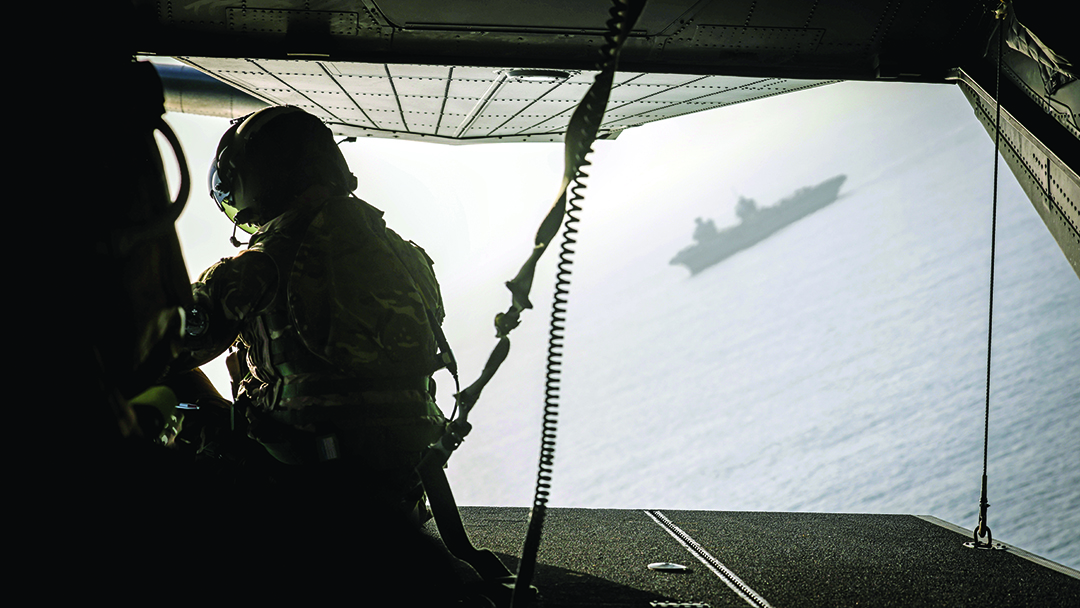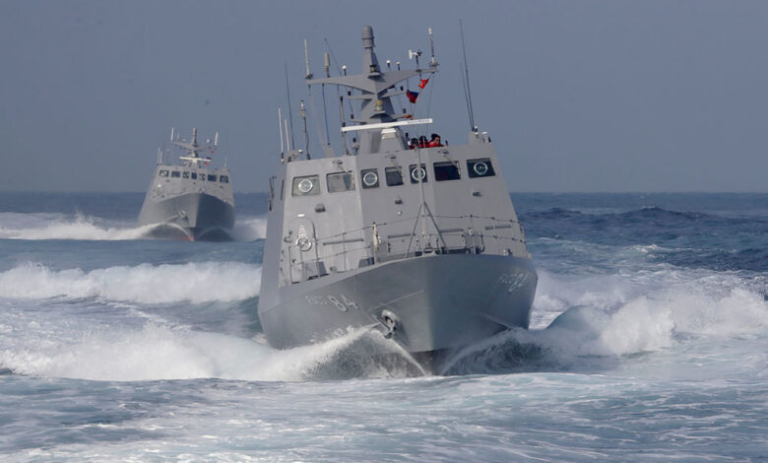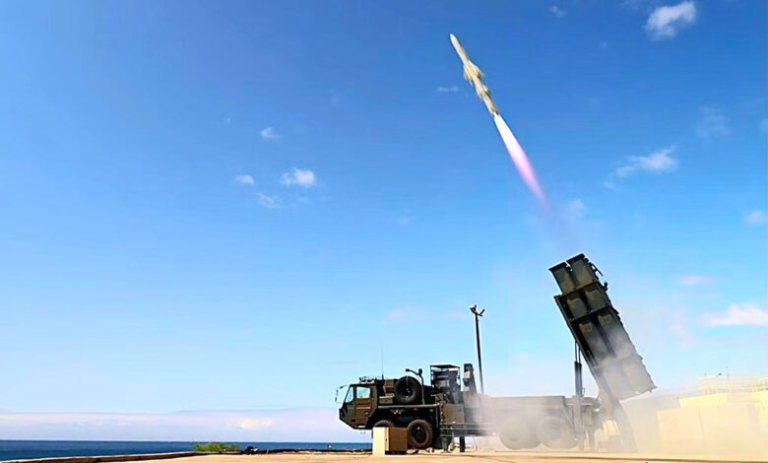
The commander of the United Kingdom Carrier Strike Group (CSG), Commodore James Blackmore, sits at the head of a complex, multinational strike group to deliver strategic effect in the Indo-Pacific region. The strike group’s flagship, the aircraft carrier HMS Prince of Wales, embarked from the U.K. The group consists of multinational constituent force elements: U.K. sovereign ships (HMS Dauntless, HMS Richmond, RFA Tidespring) as well as multinational units, the Spanish Navy frigate SPS Mendez Nunez, the Royal Norwegian Navy frigate HNoMS Roald Amundsen and the Royal Canadian Navy frigate HMCS Ville de Quebec.
Operation Highmast, as CSG activities are called, already has met key milestones. In May 2025, the strike group conducted NATO tasking and executed Exercise Med Strike, a highly complex training event involving 21 warships, three submarines, 41 fighter aircraft, 19 helicopters, 10 patrol aircraft and more than 8,000 personnel.
More recently, the strike group transited the Red Sea on its way to the Indo-Pacific. The U.K. CSG was joined by U.S. destroyers USS The Sullivans and USS Truxtun for this element of the deployment, integrating the CSG into both U.S. Central Command and Combined Maritime Forces for associated support to Combined Task Force 153, providing Red Sea security under Egyptian command.
Vessels from other nations — 13 in total across the whole of Operation Highmast — will join the CSG as it executes the scheme of maneuver. These nations include Australia, Japan, New Zealand and South Korea. Operation Highmast participants also will train with other nations as the group transits through various regions.
In July 2025, the strike group joined the multinational exercise Talisman Sabre in Australian waters as part of the operation and then will continue to sail in Indo-Pacific waters to help bring the U.K. Carrier Strike Group to full operating capability by integrating it with the U.S. 7th Fleet. “As the first U.K.-led multinational Carrier Strike Group to [join] Talisman Sabre this is a powerful demonstration of our commitment to the Indo-Pacific region,” Blackmore stated. “Exercise Talisman Sabre is also an opportunity for the U.K. to develop new levels of integration between systems and capabilities with the U.S., Australia, and other partners, enhancing our interoperability even further and to unprecedented levels.”
Operation Highmast demonstrates that the CSG is truly multinational. The CSG is a convening force for other nations to integrate with, which amplifies its strategic effect. This is the very definition of interoperability, in which the strike group can integrate into any command structure and fulfill any mission. This is unique.
To do this is not easy, particularly when it comes to command and control (C2). In fact, it is riddled with complexity. Command and control is difficult enough within a sovereign task group, across mission systems, communication bearers and various tactical data links. But to do this across a multinational force, within a different U.S. military architecture, is hugely more complex.
nteroperability is the ability of different systems, organizations and nations to work together seamlessly and efficiently. In today’s world, multinational partnerships and interoperability are not conveniences but are strategic necessity. Partnerships are force multipliers, and if we are to gain comparative advantage against proliferating threats, we need flexible C2 architecture to integrate various partnerships at any time and at any place to achieve warfighting capability at scale. Within the U.K.’s CSG and in concert with our Partners and Allies, we are harnessing new digital technologies to help achieve this. New information sharing environments, based on a data-centric approach to security rather than through traditional stovepiped networks and systems, are helping to break down old ways of operating.
This new way of working, particularly at the secret releasable level, already is proving its worth. The information sharing environment allows us to enable various digital enclaves to permit the right level of sharing among nations, across email, VOIP, chat and video teleconferencing. The capability is in its infancy, but it will increase throughout the Operation Highmast deployment. It soon will be interoperable with the well-known Combined Enterprise Regional Information Exchange System, or CENTRIXS, including Combined Maritime Forces and with Co-operative Maritime Forces Pacific. This will allow information sharing beyond the traditional levels such as NATO, enabling nontraditional multinational forces to integrate more easily.

IMAGE CREDIT: U.K. MINISTRY OF DEFENSE
When this is partnered with high bandwidth satellite communication, it is easy to start to see what the future enabling of C2 may look like. This could change the way C2 operates across coalitions of the willing when and if they are needed.
In an increasingly hyperconnected world, the credibility of multinational strike groups is vital. Assuring command and control in this way will allow us to assemble maritime f





